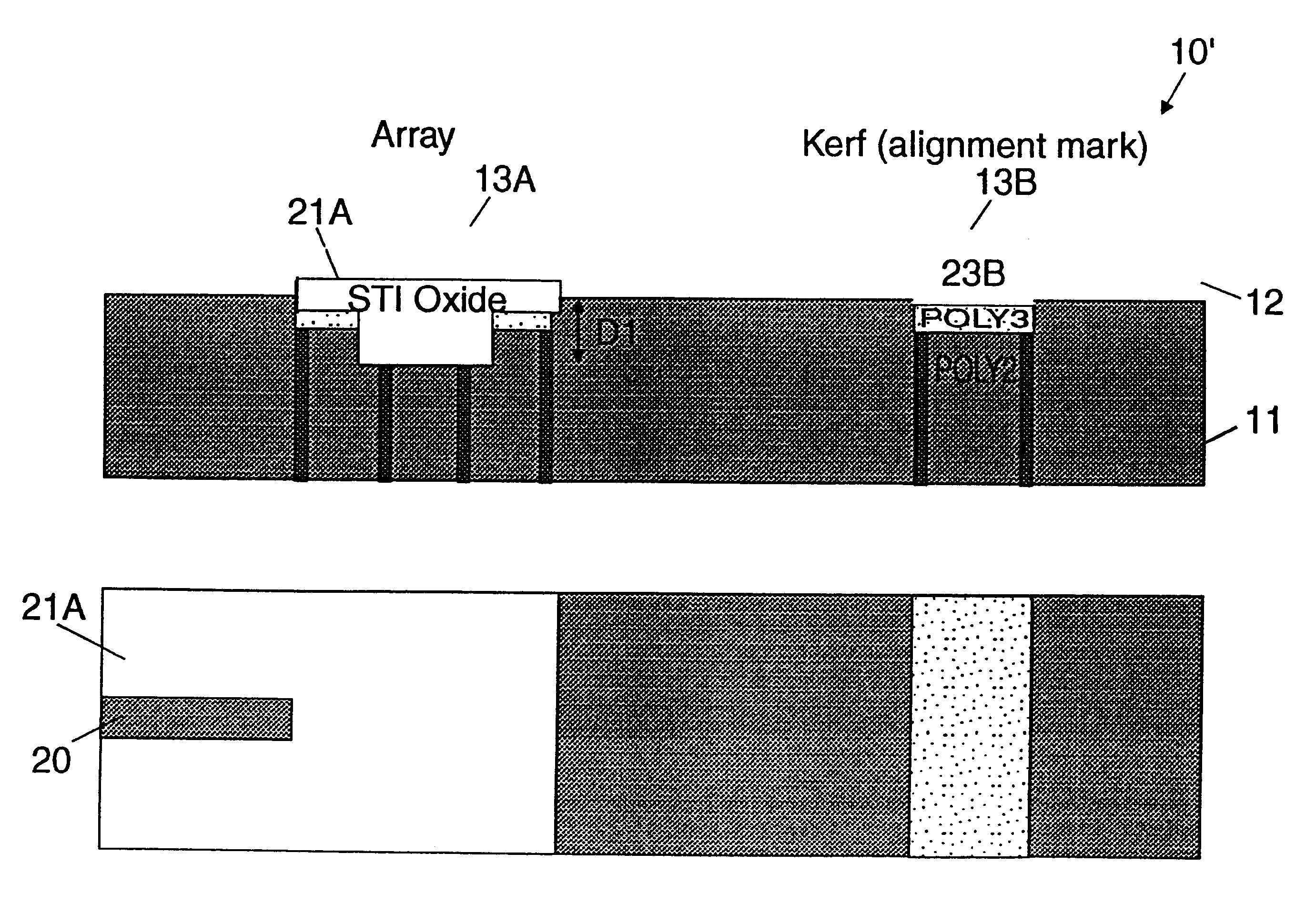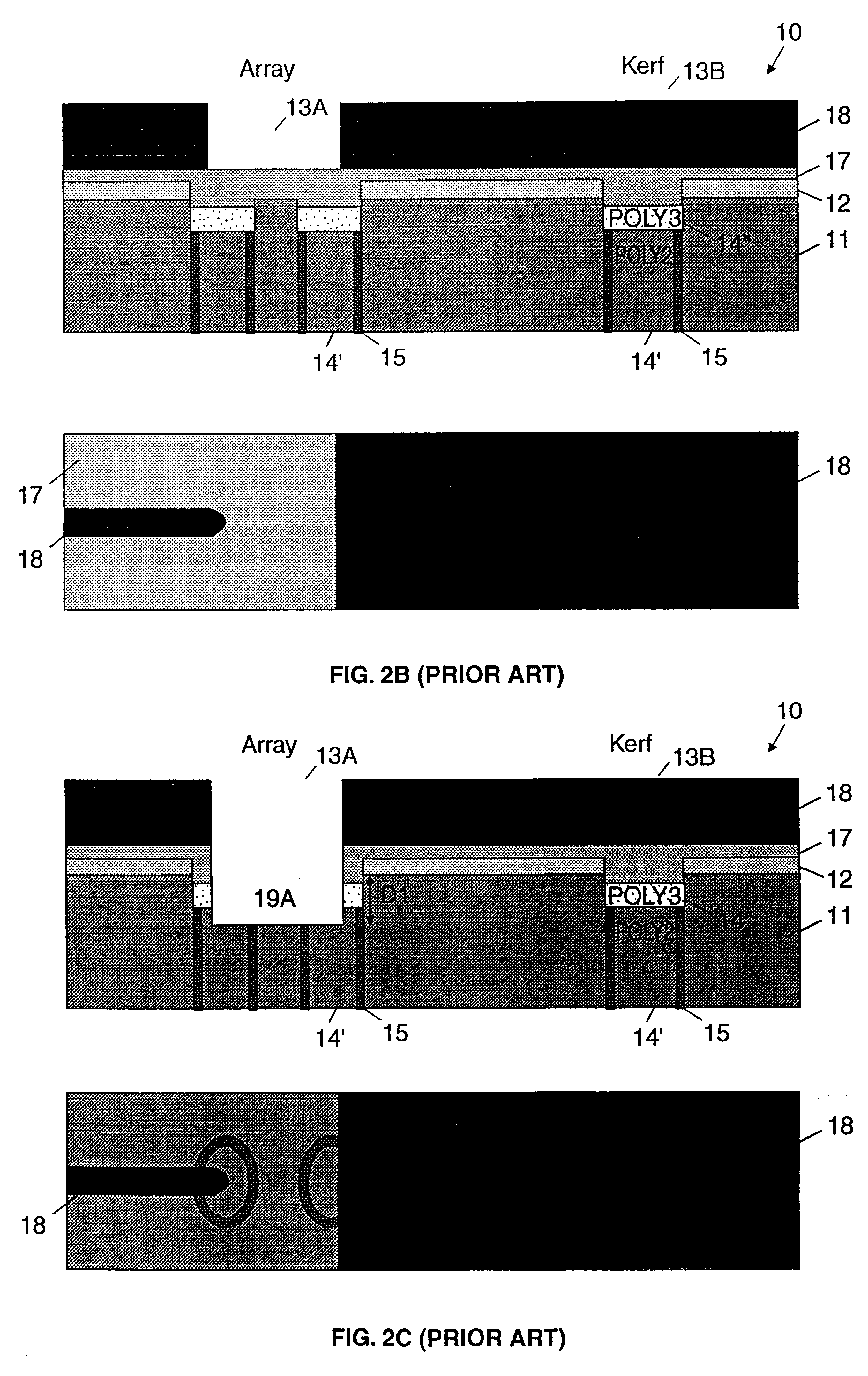Method of forming STI oxide regions and alignment marks in a semiconductor structure with one masking step
a technology of alignment marks and semiconductors, applied in semiconductor/solid-state device manufacturing, basic electric elements, electric devices, etc., can solve the problems of consuming expensive photoresist materials, kv masking steps that affect both cycle-time and tool capacity, and only create recesses for alignment marks, so as to improve process cycle-time and tool capacity, and reduce overall manufacturing costs
- Summary
- Abstract
- Description
- Claims
- Application Information
AI Technical Summary
Benefits of technology
Problems solved by technology
Method used
Image
Examples
Embodiment Construction
Applicant's inventors have discovered that the process flow of the prior art method described above by reference to FIGS. 2A-2I could be significantly improved. The novel method of forming the STI oxide regions and alignment marks in a semiconductor structure with only one masking step (instead of two) will be now described by reference to FIGS. 3A-3H. With regards to FIGS. 2A-2I, like reference numerals (with prime) are used through the several drawings to designate identical (corresponding) parts. The starting structure is still structure 10 shown in FIG. 1. It is important to point out that the illustrations are not necessarily drawn to scale. Basically, the essential point of the improved method consists in changes in the AA / STI step which now includes the RECESS3 etch.
First of all, according to the present invention, the AA mask is formed onto structure 10 before etching the POLY3 down to RECESS3 depth. As a consequence, it is now formed onto a planar surface which ensures a be...
PUM
 Login to View More
Login to View More Abstract
Description
Claims
Application Information
 Login to View More
Login to View More - R&D
- Intellectual Property
- Life Sciences
- Materials
- Tech Scout
- Unparalleled Data Quality
- Higher Quality Content
- 60% Fewer Hallucinations
Browse by: Latest US Patents, China's latest patents, Technical Efficacy Thesaurus, Application Domain, Technology Topic, Popular Technical Reports.
© 2025 PatSnap. All rights reserved.Legal|Privacy policy|Modern Slavery Act Transparency Statement|Sitemap|About US| Contact US: help@patsnap.com



